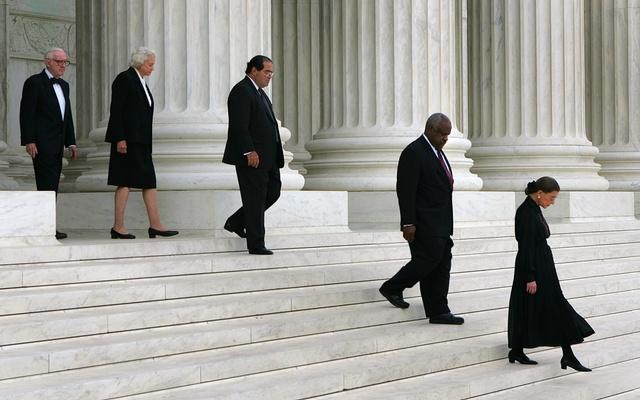Winston Churchill once insisted: “Take this pudding away—it has no theme.” The campaign for the Presidency now has a theme. Too bad.
First, too bad because its origin resulted from death—a single death, Ruth Bader Ginsburg. Prior to the Justice’s death the theme seemed to be organized around a lot of deaths—the consequences of Covid 19.
My view about who we should choose to be President is principally informed by the fact that each four years offers up unanticipated challenges and sometimes calamities and we should choose a person who we are confident can lead the government’s response. Who is up for the job, that is the question. We are not offered, in 2020, a particularly encouraging choice.
Now and once again the Supreme Court composition will, for many, become the election’s context—the pivotal issue.
The Supreme Court’s composition is always important, but it has in recent decades become central. Congress has become riven with infantilizing partisanship and as this democratic element in America’s balance of powers has failed, the Executive branch tries to take over—a strange American-style authoritarianism.
President Obama captured the style: CBS reported, “Obama’s reliance on his executive powers and his bully pulpit — at the White House it’s called his “pen-and-phone” strategy — illustrates the means at his disposal to drive policy but also highlights the limits of his ability to work with Congress.” President Trump has doubled down on this approach.
The Courts and ultimately the Supreme Court are left to decide whether the Executive Branch has gone too far—whether its actions are constitutional. President Trump and his foes engaged the judicial branch immediately.
Wikipedia reports that “Trump signed 24 executive orders in his first 100 days, the most executive orders of any President since World War II.” The Courts were quickly engaged. Wikipedia further notes, “Legal challenges to these orders were brought almost immediately after their issuance. From January 28 to 31 almost 50 cases were filed in federal courts.”
Washington is an unsentimental town. The consequences of Justice Ginsburg’s death have filled up Twitter since the earliest announcement. A number of researchers/journalists have noted that it takes an average of around 70 days from nomination to final vote on Supreme Court nominations. The importance of the nine justices should require both a thoughtful and rigorous process.
But, when the next justice becomes the issue the protocols and timing of the past become bothersome facts. And maybe that is just as well, given where we are as a nation. The fight to come, both the process and the selection, will certainly highlight differences in vivid terms.
Twenty-four hours ago the election was about the White House and who would control the United States Senate. Now the election is about the other branch, the one that actually makes final decisions.
Al Sikes is the former Chair of the Federal Communications Commission under George H.W. Bush. Al recently published Culture Leads Leaders Follow published by Koehler Books.



Write a Letter to the Editor on this Article
We encourage readers to offer their point of view on this article by submitting the following form. Editing is sometimes necessary and is done at the discretion of the editorial staff.